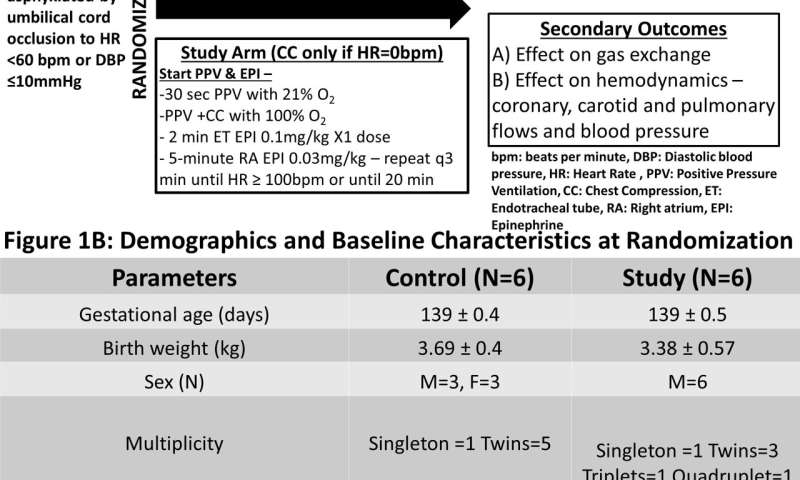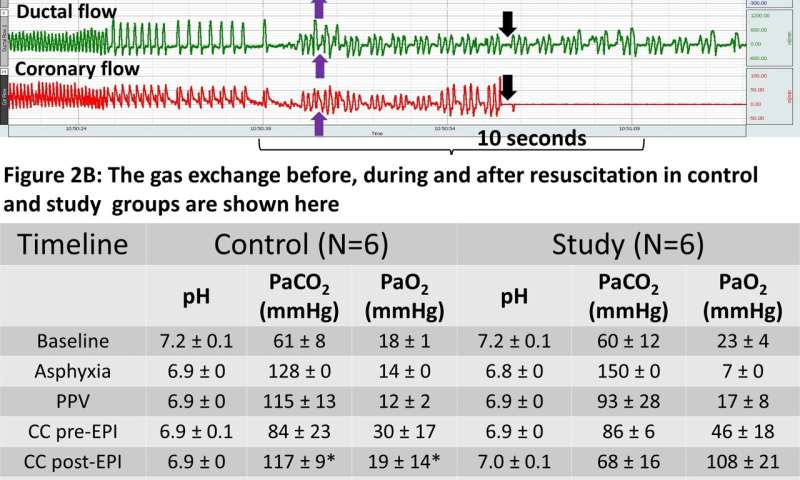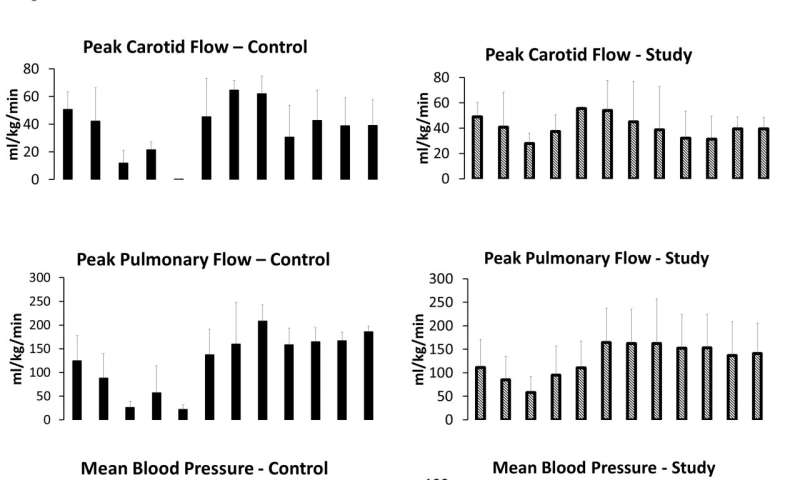New study evaluates current neonatal resuscitation guidelines

A new randomized control trial compares the current recommendations of ventilation and chest compression versus ventilation during neonatal resuscitation using an ovine model of bradycardia. Findings from the study will be presented during the Pediatric Academic Societies (PAS) 2022 Meeting, taking place April 21-25 in Denver.
Current guidelines recommend initiating chest compressions when the heart rate is less than 60 beats per minute after 30 seconds of effective ventilation. Neonates receiving chest compressions are at high risk for mortality and poor neurodevelopmental outcome. While chest compressions provide circulatory support, its efficacy in neonatal bradycardia secondary to its asynchronous nature to the existing cardiac rhythm remains unknown and could be deleterious. Addressing neonatal asphyxia with adequate ventilation could reduce the need for chest compressions and improve overall outcomes.
The pilot study suggests that optimizing ventilation and avoiding chest compressions for bradycardia in neonatal resuscitation could reduce the need for chest compressions and improve gas exchange in an ovine model. With these data, the researchers intend to evaluate lowering the cut-off to initiate chest compressions for neonatal bradycardia for heart rates less than 30 beats per minute versus less than 60 beats per minute using both term and preterm models of bradycardia.
-

Design, Methodology and Outcomes. Credit: Jacobs School of Medicine and Biomedical Sciences, University at Buffalo -

BIOPAC computer snapshot shows loss of intrinsic activity with perfusion after initiation of chest compression during bradycardia. Credit: N/A -

The peak coronary, carotid, pulmonary flows and mean blood pressure are shown before, during and after resuscitation in both groups. Once chest compressions were initiated, the flows were not different between the control and study group. Credit: Jacobs School of Medicine and Biomedical Sciences, University at Buffalo
"Most neonates transition successfully at birth and establish normal breathing with lungs as the site of gas exchange," said Mausma Bawa, MD, fellow physician at Jacobs School of Medicine and Biomedical Sciences at the University at Buffalo. "Neonates who require extensive resuscitation are at higher risk of morbidity and mortality. Currently, International Liaison Committee on Resuscitation (ILCOR)/Neonatal Resuscitation Program (NRP) recommends initiating chest compressions when the heart rate is less than 60 after 30 seconds of effective positive pressure ventilation through a properly secured advanced airway. Since there is no evidence for this current practice, our study evaluates the current recommendations. Our pilot study using a term ovine model suggests that focusing on ventilation for bradycardia during neonatal resuscitation could reduce the need for chest compressions."
More information: Conference: www.pas-meeting.org/




















